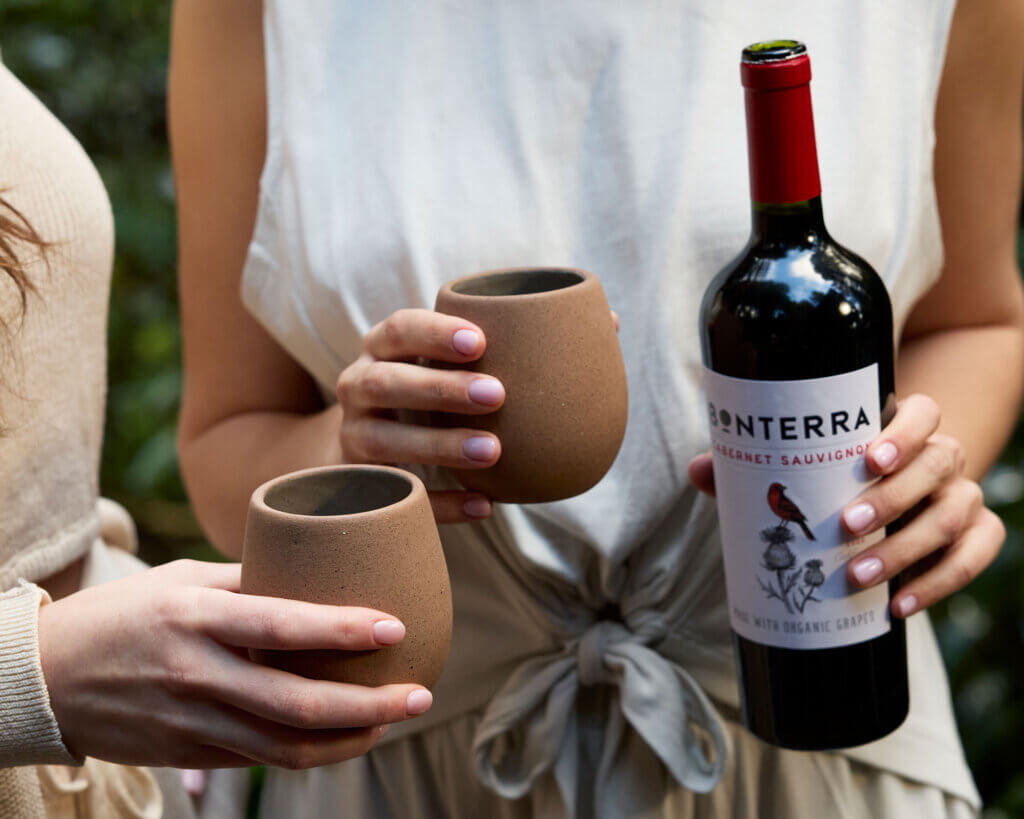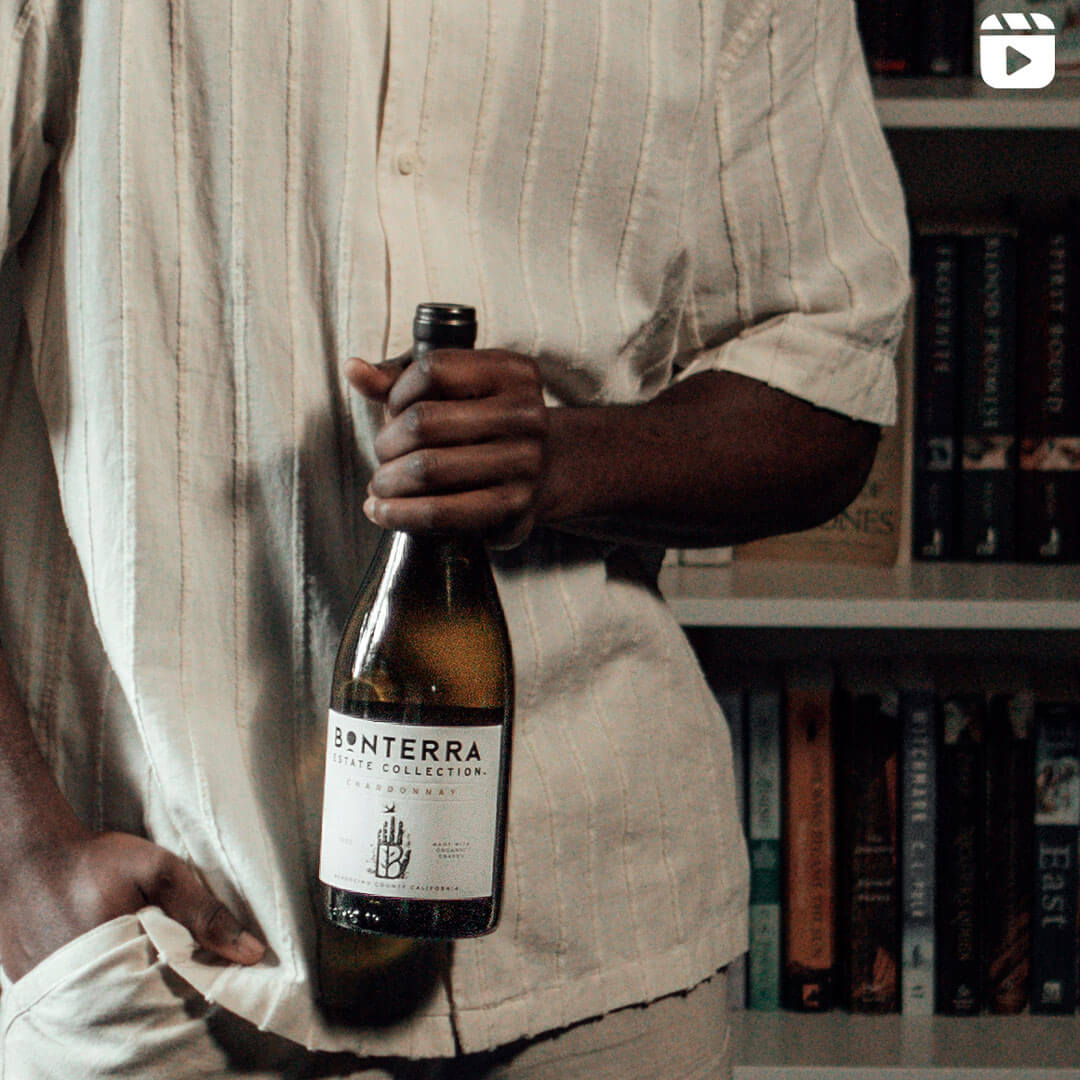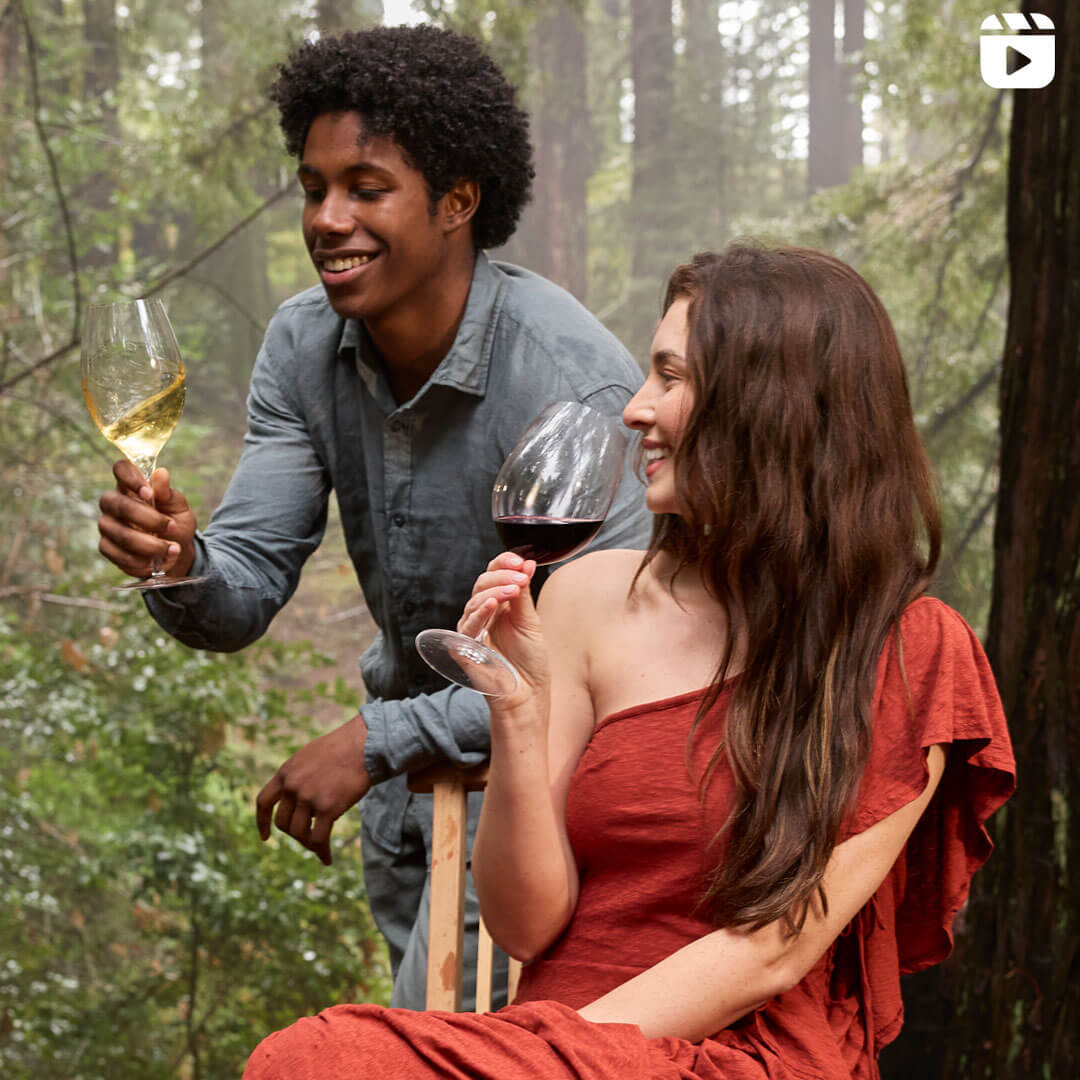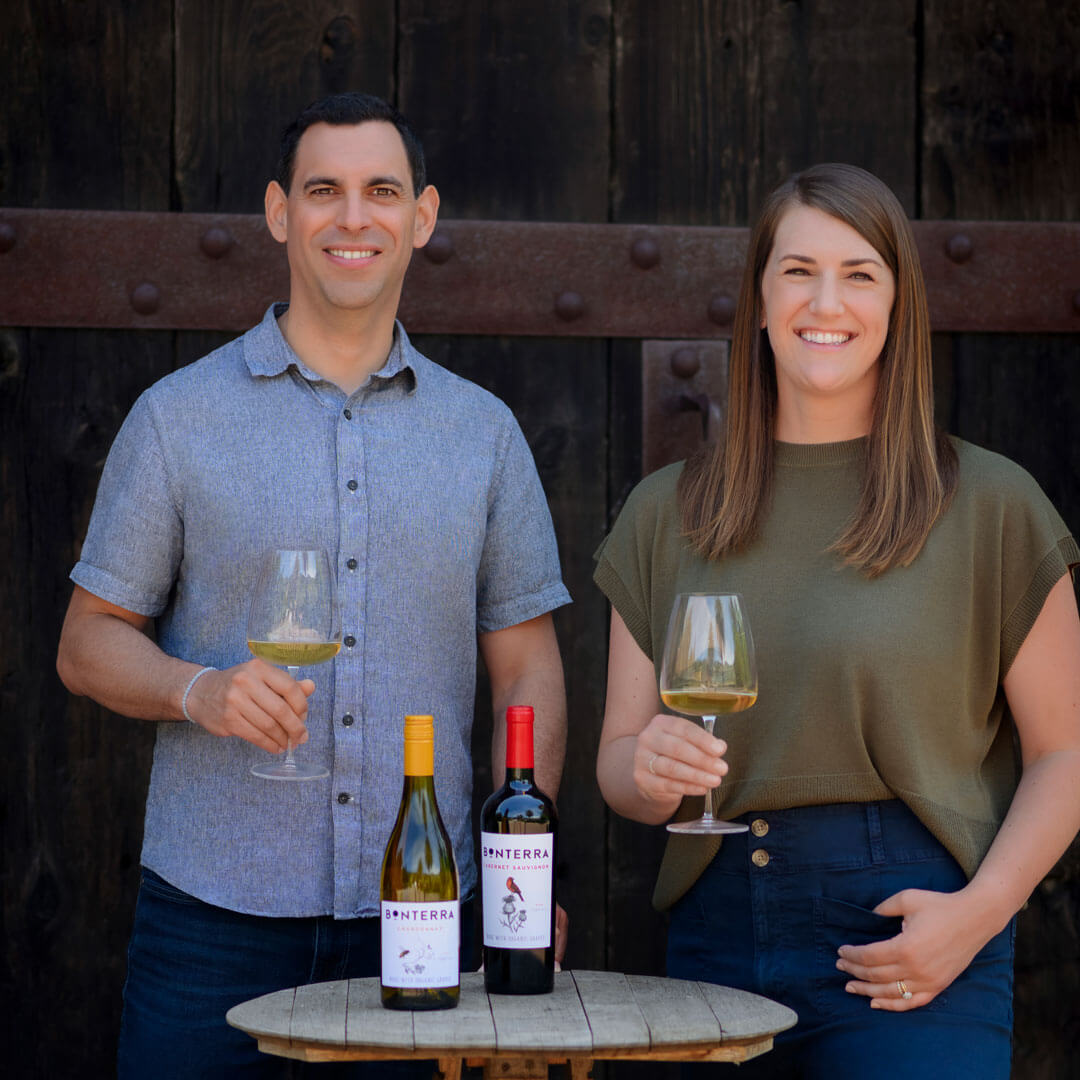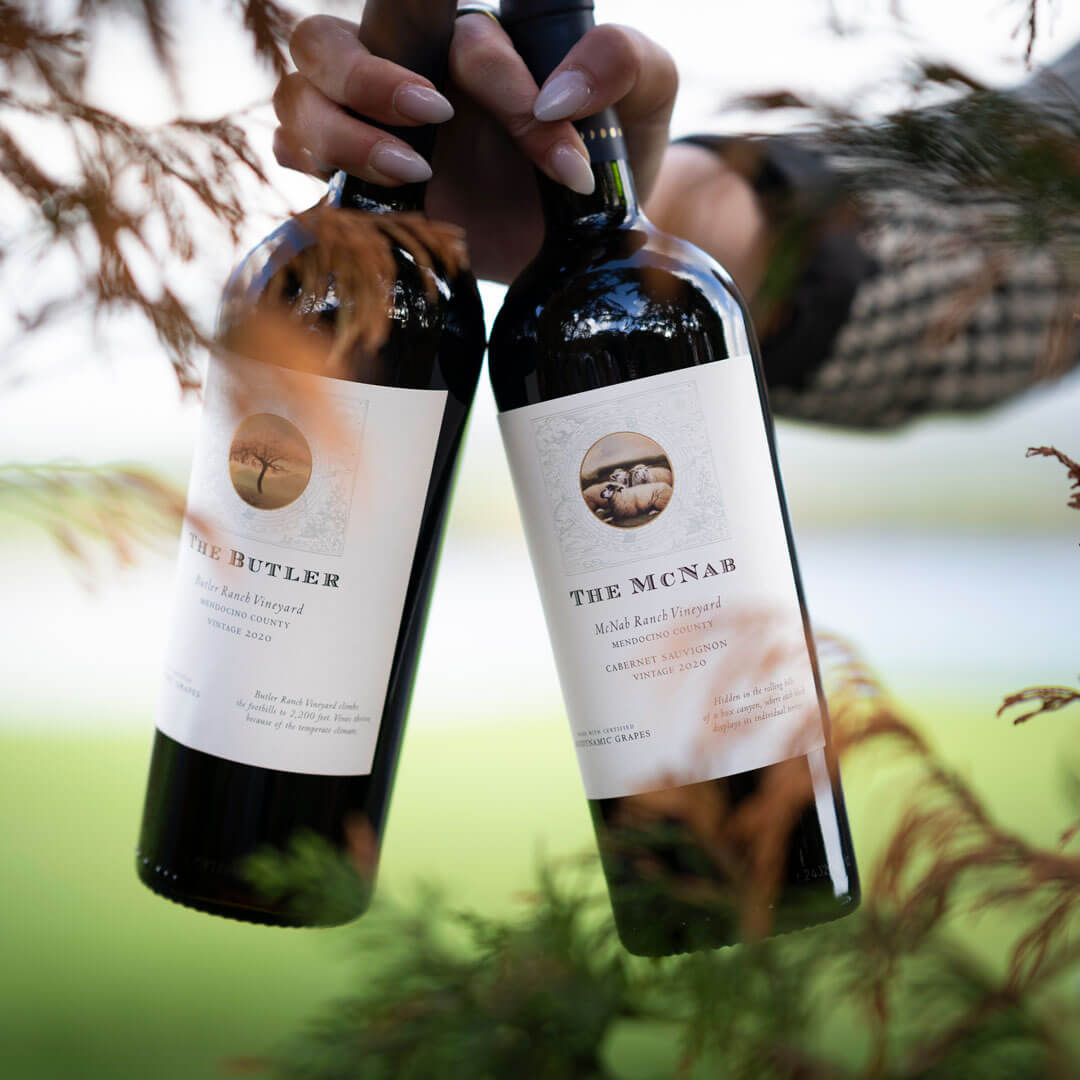Properly aging wine can transform your beverage into an evocative narrative of flavor, time and terroir. Far more than a passive process, wine preservation is an intricate art that benefits from knowledge, patience, and an appreciation for how wine evolves through careful storage and cellaring. And while not all wines require aging, those that do reward an informed approach.
From vibrant Bonterra Sauvignon Blanc, perfect for immediate enjoyment, to age-worthy pours from our Bonterra Single Vineyard Collection wines that evolve beautifully over several years or more, our collection or organically farmed wine is diverse and rewarding.
To aid you in safeguarding treasures such as these, we’ve put together a guide to help you carefully curate and age your wine library, ensuring that each vintage reaches its full potential.
The Art of Vinous Patience: Preserving Age-Worthy Treasures
In the world of fine wines, the ability to age gracefully is a hallmark of quality. The process is a delicate tap dance of acid, tannins, and balance–with the goal to find the ideal harmony of these qualities ahead of enjoyment.
Consider The McNab, our single-vineyard Bordeaux-style blend with an intense, flavorful structure that rewards practiced cellaring. Its robust structure and complex flavor profile promise a fascinating evolution over the next decade or more. The tannins, firm in youth, will gradually soften, revealing evocative layers of blackcurrant, cedar, and subtle earthy notes.
The Butler, another acclaimed and expressive Bonterra red blend, is perhaps the ultimate expression of Bonterra’s age-worthy potential. With its intense concentration centering Rhône grape varieties and impeccable balance, its structure will further unfold beyond the decade mark, promising a reveal of dark fruits, spice, and ethereal mineral complexity.
As you curate your collection, remember that these wines are living entities, each on its own unique journey. The key is to understand its rhythms and potential. With patience and care, you’ll discover the profound pleasure of enjoying an age-worthy wine at its peak—a moment of vinous perfection that truly embodies the essence of time in a bottle.
Mastering Wine Storage: Creating the Ideal Environment
Successful wine preservation is a science of sorts requiring careful environmental control. Temperature is a critical factor, with 55°F emerging as the gold standard for home wine cellaring. This seemingly precise temperature is not arbitrary—it represents the ideal target for preserving wine’s molecular complexity.
Humidity is another crucial consideration. The ideal level of 70% humidity prevents cork deterioration while avoiding potential mold growth. This delicate balance ensures your wines remain protected, their potential for evolution intact. Pro tip: advanced collectors invest in specialized storage solutions that go well beyond simple kitchen cabinets or countertops.
Consider the environmental threats to wine:
- Direct sunlight can rapidly degrade wine compounds
- Temperature fluctuations cause chemical reactions that compromise flavor
- Vibrations disturb sediment and interrupt the aging processes
- Improper humidity can dry out corks or promote mold growth
For these reasons, you might consider investing in a dedicated wine refrigerator for your wine library. Specialized units allow you to create environments with consistent temperature, humidity control, and protection from external environmental factors.
Understanding Wine Varieties and Their Aging Potential
Not all wines are created equal when it comes to aging. Different varietals have varying structures and characteristics that determine how well they age. Knowing what is a good wine to age can help you curate a collection with true aging potential.
- High-Tannin Reds like Cabernet Sauvignon, Syrah, and Nebbiolo have the acidity and tannin structure needed to develop complexity over time. These wines improve with age, gaining depth and smoothness as tannins soften.
- Medium-Bodied Reds such as Merlot and Zinfandel can also age but typically don’t require as much time as high-tannin reds. They evolve more quickly and may reach their peak within 5-10 years.
- Light Reds and Whites, like Pinot Noir and Riesling, are often best consumed within a few years of release. Their flavor profile tends to shift quickly, but they offer a delightful experience in their youth.
- Fortified Wines (e.g., Port, Sherry) often have excellent aging potential due to the high alcohol content, which preserves their structure for decades.
The Evolutionary Journey of Wine
Tracking a wine’s aging process is an art form in itself. Each tasting becomes a moment of discovery, revealing how time transforms flavor profiles. Our Bonterra Cabernet Sauvignon offers a remarkable example of this transformation. Young vintages burst with vibrant black cherry notes that gradually evolve into more nuanced expressions of so-called secondary notes including dried fruit, leather, earth, and subtle grilled herb characteristics.
Strategic sampling becomes critical:
- Remove a bottle from your collection every 2-3 years
- Use proper decanting techniques
- Take detailed tasting notes
- Enjoy observing gradual changes in wine aromas, flavor, and texture
Organic Wines and Aging Potential
As an organic winery, our commitment to organic farming creates wines with exceptional, long-lived flavors. In avoiding unnecessary inputs and working in harmony with nature, we set the stage for wines that capture the truest expressions of their terroir. Regenerative farming creates healthy soils and intensely flavored grapes, which provides a solid foundation for long-term cellaring in suitable varietals and wine blends.
Common Pitfalls in Wine Preservation
Wine enthusiasts may unknowingly compromise their collections through well-intentioned but misguided storage practices. Storing bottles upright, exposing them to temperature fluctuations, or placing them near vibrating appliances can irreparably damage even the most promising vintages.
Savvy collectors understand that wine storage is an investment. Proper storage can transform a good wine into an extraordinary experience, while poor storage can render even the most expensive bottle undrinkable. Of course, we know you’d never dream of allowing these common mistakes to befall your finest pours–especially now that you have this handy guide!
When to Seek Professional Advice on Aging Wine
Aging wine can be a rewarding but intricate process. At certain points, consulting with experts can help take your collection to the next level, ensuring optimal storage conditions and perfect timing for enjoying your aged wines.
- Wine Consultants: These professionals offer personalized advice based on your collection, helping you identify the best wines to age and when to open them.
- Sommeliers: Professional sommeliers can provide expert guidance on selecting wines with aging potential and offer recommendations for your specific storage conditions.
- Aging Facilities: For collectors with extensive collections, wine storage lockers or professional cellaring services offer climate-controlled environments designed to preserve and optimize aging conditions.
Determining the Perfect Moment to Open an Aging Wine
When enjoying finer wines, including those you’ve aged, timing is everything. At Bonterra, we understand that each bottle holds a story waiting to be told, and pinpointing the perfect moment to uncork is an art form that blends science with intuition.
While some wines are crafted for immediate enjoyment, others—particularly structured reds—immensely benefit from patient aging. Professional sommeliers may provide suggested drinking windows, but we believe that personal preference remains the ultimate arbiter.
After all, the “perfect” moment to open a bottle isn’t dictated by critics or calendars—it’s when the wine speaks to you when it becomes the perfect complement to an experience. To truly appreciate this evolution and develop an intimate understanding of how a particular vintage unfolds, we invite you to become both a student and storyteller of your wine’s journey:
- Conduct periodic tastings every 6-12 months, allowing you to witness the wine’s transformation firsthand.
- Keep a wine journal, not just of tasting notes, but of moments and memories.
- Trust your palate and your own intuition. Each stage of a wine’s life offers unique notes.
Remember, there are no hard and fast rules—only guidelines and discoveries. Whether you’re savoring our Bonterra Chardonnay in its youthful vibrancy or uncorking a carefully cellared bottle of our Estate Cabernet Sauvignon, each moment offers its own unique point of view.
A Brief History of Wine Caves and Preservation
In the annals of viticulture, wine caves emerge as silent guardians of liquid treasures. Ancient wine lovers pioneered this subterranean art, recognizing the earth’s natural ability to cradle vintages in consistent coolness and humidity. Medieval monks, alchemists of fermentation, refined these techniques within monastic cellars, elevating preservation to a sacred craft.
Northern California’s viticultural visionaries were among the first to revive this tradition stateside in the 1800s, carving some of our first wine caves by hand. After Prohibition’s drought, the 1960s saw modern engineering lead the sculpting of vast underground networks. Today, these caves stand as marvels of sustainability and oenological science, maintaining near-perfect temperature and humidity levels that coax wines to their fullest expression.
Because we know we can’t all own our own genuine wine cave, here are some of our favorite ways to store and keep your most valued wines when tight on space.
Home Storage Solutions
Near-Term Drinking
For wines intended for consumption within a few months, consider these storage tips:
- Store white wines at 45°F to 55°F (7°C to 13°C) and red wines at 55°F to 60°F (13°C to 15°C).
- Keep bottles away from direct sunlight and heat sources like stoves or dishwashers.
- Use a wine rack or cooler to store bottles horizontally, keeping corks moist.
Long-Term Storage
For wines meant to age:
- Maintain a consistent temperature around 55°F (13°C).
- Keep humidity levels between 60-70%.
- Store bottles horizontally to prevent corks dfrom rying.
- Avoid vibrations and strong odors.
- Consider investing in a dedicated wine refrigerator or cellar for optimal conditions.
Offsite Storage Options
For those with limited space or extensive collections, offsite storage facilities offer professional-grade solutions:
- Wine storage lockers are available in many cities, with monthly rental options.
- Some facilities provide additional amenities like tasting rooms or social events.
- Prices vary, but lockers typically start from $40-$200 per month, depending on size and location.
Wine preservation represents a profound intersection of science, patience, and sensory exploration, so we invite you to transform your wine collection into a carefully curated narrative where each bottle tells a story of place, practice, and passion. Here’s to the journey, to the discovery, and to the perfect pour—whenever you decide that moment may be. With Bonterra, every sip is a celebration of nature’s alchemy and the patient art of winemaking.
Ready to dive in? Select wine online at our store.
